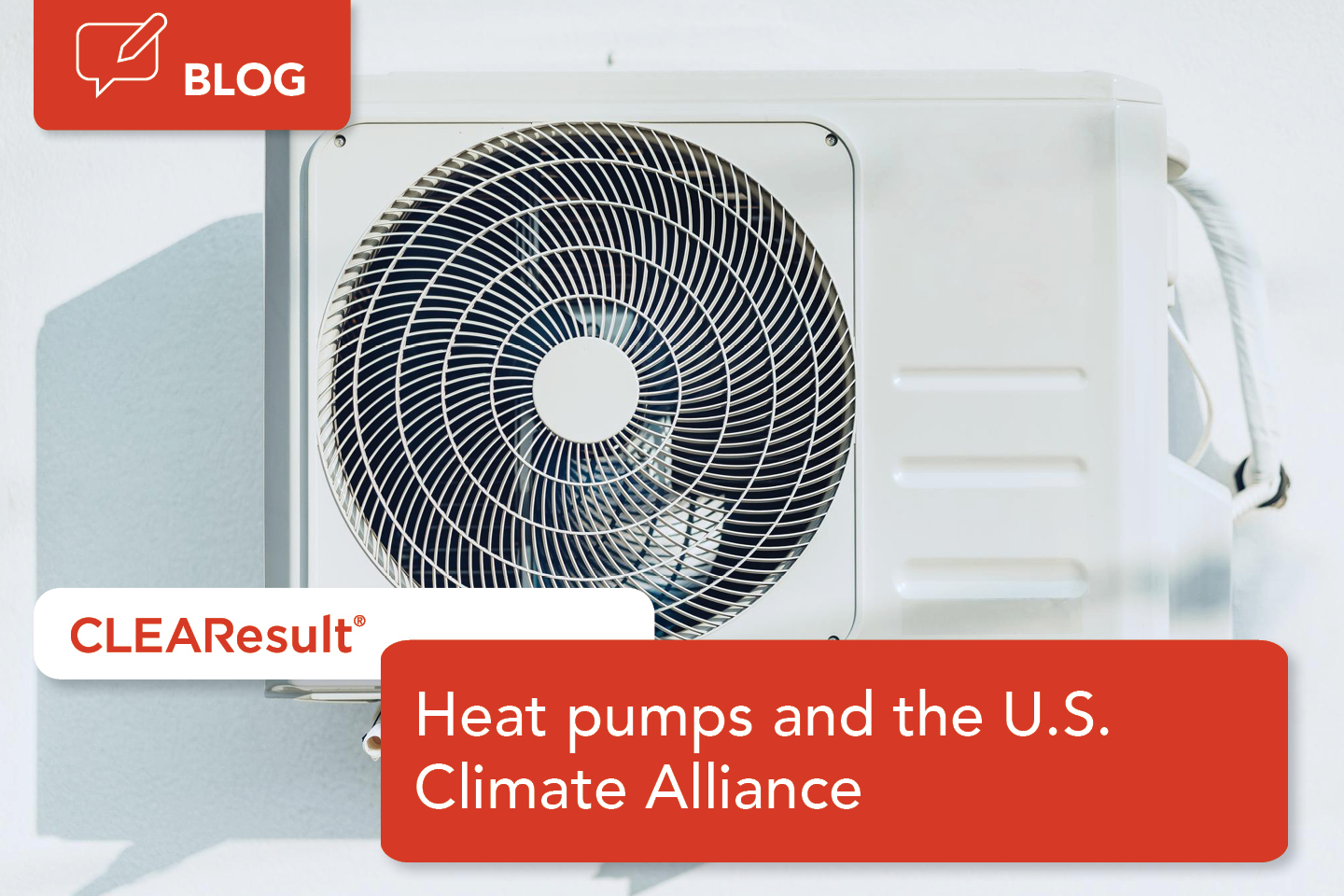The new push for heat pumps: Q&A with Harrison Grubbs

The U.S. Climate Alliance, a bipartisan coalition of 25 state governors, recently announced its plans to introduce a series of incentive programs to decarbonize buildings through electrification and energy efficiency. One driver of this effort is the goal to quadruple the number of heat pump installations in member states by 2030. We sat down with Harrison Grubbs, CLEAResult’s Vice President of Energy Efficiency, to learn more about heat pump technology and what to expect from the upcoming incentive programs.
Heat pumps have been around for a long time but are still only found in about 15% of U.S. homes. Why has adoption been so slow?
Heat pumps have evolved considerably. For years, they were only suitable in warmer climates with lower heating loads. When temperatures dropped below about 35°F, these heat pumps did not perform well and relied on electric resistance auxiliary heat to compensate for their shortcomings in performance. With extended periods of cold, customers saw significant increases in their electric bill due to the conditions that required the inefficient auxiliary heat. These heat pumps are still widely used and they are effective in warmer climates. In fact, some states in the Southeast have nearly a 40% adoption rate and they have managed heat pump programs for decades.
But as heat pump technology has evolved, the ability to operate in colder climates has significantly improved. Additionally, the styles have changed to include ductless systems that can be installed with minimal effort. The efficiency (SEER rating) has continued to increase, meaning customers are heating and cooling with lower operating costs than with older heat pumps! This versatility has driven the recent surge in demand, and heat pumps are now widely considered an invaluable tool in the move toward decarbonization.
Given the federal spending that will drive heat pump adoption through the Inflation Reduction Act (IRA), we are confident that heat pumps are going to become the standard for home conditioning.
What types of climates are best suited for heat pumps to run efficiently?
Heat pumps can be suitable in all US climates, but the type of heat pump should be chosen specifically for that climate. There is now a distinct classification of heat pumps called cold climate heat pumps. These will be the best choice for those living in New England, for example, but will not be ideal if you live in the Southeast. It is always best to work with an experienced and certified installer to ensure that your system is properly designed for the climate you live in.
Do you think that most states will offer direct incentives to businesses and homeowners, or will they go through utilities?
Based on the Department of Energy guidance for IRA incentives, states have some flexibility in how they distribute funds to customers. Each state is at a different point in their heat pump journey. In states where there is not a program infrastructure in place, states must design their own programs to deploy the heat pump incentives. As most states are still in the planning process, I expect they are evaluating this exact issue. However, there are some states that already have robust heat pump incentive programs and qualified installation companies. I would suggest that those states use their IRA dollars to amplify their existing programs. In the states where we are actively consulting, we are making recommendations to leverage existing programs, infrastructure and trade ally networks wherever possible, as this will accelerate the speed to market.
Besides heat pumps, what other HVAC technologies are you excited about for the future?
While I have focused this conversation on heat pump heating and cooling, we should also acknowledge that as heat pump technology has improved, the uses for this technology in other home service applications have expanded. The market for heat pump water heaters (HPWHs) is accelerating rapidly and incentives for HPWHs are built into the IRA. Within utility programs, HPWHs are a great choice for replacing electric resistance water heaters. The IRA also has dedicated funds for heat pump dryers, the latest application for this technology. These appliances are expected to follow the same steep adoption curve we see with heating, cooling and water heating systems.
Otherwise, there are a few other technologies that I am excited about:
- Gas absorption heat pumps: These are gas-fueled heat pumps that are typically more efficient than gas furnaces. We have a few pilots operating in the US and Canada, but see tremendous potential with the technology for natural gas customers.
- Aeroseal: This is one specific brand that provides a duct sealing solution by using an aerosol spray to seal ducts from the inside. Anyone who has spent time working around duct systems knows how many issues there are with penetrations and careless sealing. This is a scientific approach to minimize duct leakage, which means more conditioned air is getting where it needs to go.
________________
Harrison Grubbs brings more than 15 years of industry experience, and over 10 years of residential utility program management to his role CLEAResult. In his role as Vice President of Energy Efficiency, Harrison and his team are responsible for developing, standardizing and sharing best practices across all CLEAResult residential energy efficiency programs. The energy efficiency team ensures that all our work aligns with leading industry best practices, and they are constantly working to optimize the programs we are engaged in by delivering new and innovative solutions and pilot programs.
Here is the announcement from the U.S. Climate Alliance on their new commitment to heat pumps.
More on heat pumps from Insights: